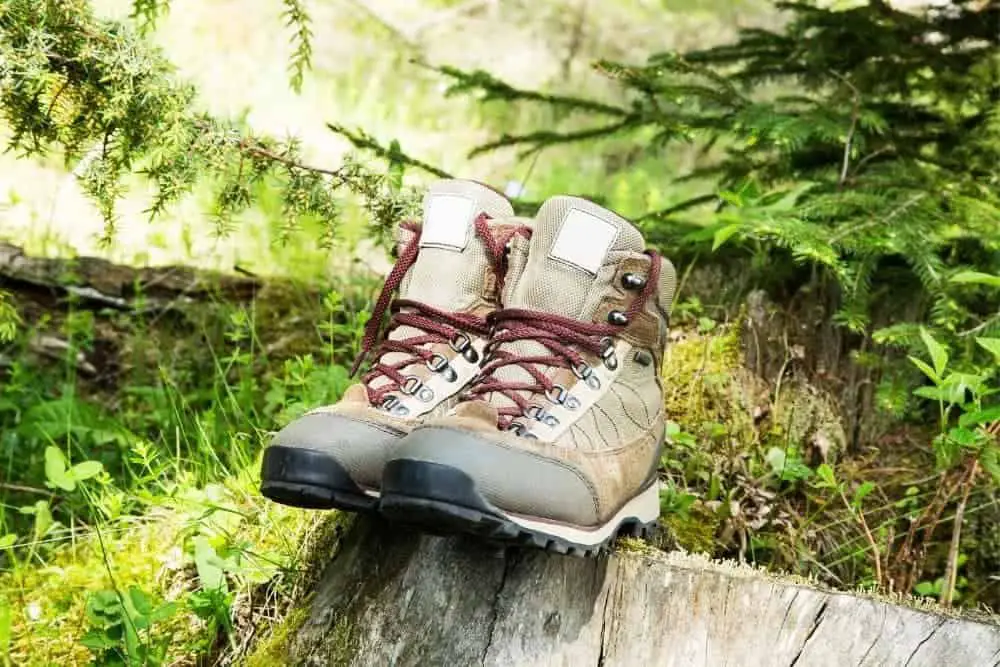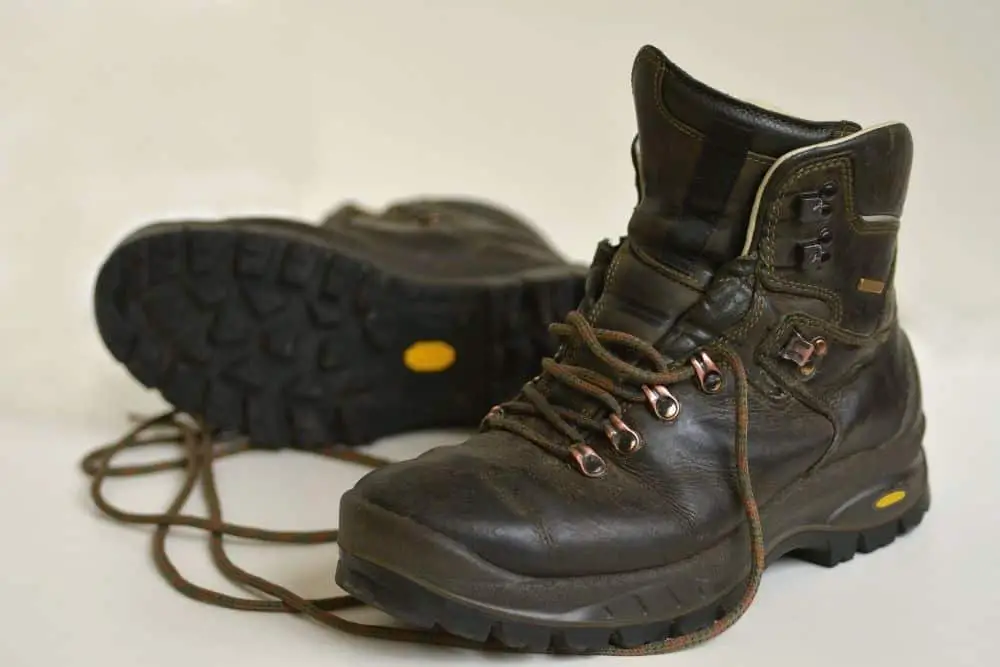If you are reading this, it is likely because your hiking boots don’t fit properly and are causing you some pain.
To answer your question without wasting any time, yes, hiking boots can stretch. Stretching your hiking boots may be the only way of achieving a snug fit.
Perhaps, there has been a time when you bought a hiking boot which was painful at the toe box but after some time the pain went away and the boot became more comfortable.
Wearing boots over a long period of time causes them to stretch although there are other ways to hasten the process.
The term ‘break in’ is used frequently to explain the process of stretching hiking boots. However, how much a hiking boot can stretch without damage will depend on the material used in the manufacture of the boots.
For example, genuine leather is a natural material obtained from the hides of animals. This material reacts naturally to weather conditions and will stretch or shrink naturally depending on the weather condition.
How often you wear your boots and the nature of the area you hike will also determine if your boots will stretch or shrink.
Contents
Do hiking boots stretch out?

Hiking boots stretch depending on the material although this stretch will not be much. Therefore, if you have really tight boots, it is most unlikely that you will achieve a snug fit by trying all the stretching techniques available out there.
In fact, a lot of professionals hate to use the term ‘stretching’ because the expansion that happens is so small that calling it stretching can be misleading.
However, after wearing the boots for a while, the footbed will likely expand to give you more room to curl your feet or wiggle your toes.
Therefore, if your boots are only slightly tight on purchase, there is a huge chance that you will achieve a snug fit after ‘stretching’.
However, banking on stretching to achieve a snug fit for really tight boots is a risky gamble that you are most likely to lose.
The biggest challenge with trying to achieve a snug fit by stretching is that the process also voids your warranty.
Thus, if at the end of your trial the boots don’t still fit snugly, you will be unable to return them for replacement or refund. That means you will be stuck with boots that will remind you of badly invested funds.
How much can a boot stretch?

Guess it will be adding just around a half size when your boots are well stretched.
Boots are made using different materials including leather, PU leather, suede, polyester, and nubuck.
The material used in the production of a boot will determine how much it will stretch, how long it will take to stretch, how much the weather can affect their stretching or shrinking, and how comfortable it will become over time.
For example, while leather and other natural material can change shape when exposed to rain, PU leather can withstand the same condition without any noticeable change.
Natural materials like leather, wool, cotton (with spandex) or other advanced textiles are easier to stretch while synthetic materials like PU leather, plastics, and nylon are more difficult to stretch.
Common stretching tips like getting the boot wet and wearing it till it gets dry (which we don’t recommend) or wearing multiple thick socks with the boots can work with natural material.
Synthetic materials, on the other hand, may require the use of tools to stretch.
- ONLY 1 Premium Stretcher is included with your purchase. It's Designed for Both Right & Left Shoes....
- GET THE PERFECT FIT - Stretch your Shoes into the Perfect Fit for your foot with this Premium...
- FAST 2 WAY STRETCHING - In just 8 Hours, Stretch the Length or Width of your Shoe into the Ultimate...
Last update on 2023-11-10 / Affiliate links / Images from Amazon Product Advertising API
How to tell if your boots need stretching
According to a 1993 publication in the Foot and Ankle International by Frey and others, the majority of people (especially women) wear the wrong shoes for their feet.
There is no simple definition for what a wrong shoe means. However, if you are experiencing one of the following problems it is because your shoe is not the right fit:
- A narrow or too low toe box that makes it hard for you to wiggle your toes
- The boot length feels short and forces you to squeeze your toes to achieve comfort
- Boots have an unnatural shape that doesn’t conform to that of your foot
- You are experiencing difficulty with curling your feet which affects how you walk
- Overall unease makes you cautious of your step
Wearing the wrong pair of boots can be injurious to your joints and fit over time.
One of the commonly experienced problems is blisters on the toes. However, the persistent wearing of wrong boots can lead to more severe problems including amputation.
What to consider when buying slightly smaller boot sizes

There are a number of genuine reasons that can make someone buy a boot that is slightly smaller than their size. One of them is when the boot design they love is not available in bigger sizes.
Since stretching will not always achieve the goal we desire, it is important to have a checklist of the next actions you can take if you buy a boot that is slightly smaller than your size.
Some of the questions that you should ask when buying boots that are smaller than your size include:
- Can I return it for a refund or replacement if it fails to stretch to fit?
- Can I donate it to a friend or to charity if I cannot return them?
- Can I get a close substitute that will fit better?
- Will the boots cause harm to your feet?
- Will I get a better fit if I spend more time on research?
- Will it cost you more in time trying to fix it?
In a nutshell, you should consider finding a way to stretch the boots out if the boot size is just about 1 size smaller than your feet.
Otherwise, trying to make the effort to widen the footwear may make things worse and you may be ineligible to return them back.
How to tell if your boots are stretched

Since the stretching that happens with boots is usually too small, it is almost impossible to tell if a boot is stretched simply by staring at them.
Yes, there may be physical tension like wrinkling in some areas. Nevertheless, the best way to know if boots are stretched is to try them on.
When you notice enough space in your toe box which was not there before such that you can wiggle your toes, congratulations, your boots are now stretched.
Another way to tell if your boots are stretched is when you can curl your feet in the boots or suddenly start walking without being overly conscious of your steps.
Conclusion
Our guess is that you can only add about half an inch to the original size of your boots no matter how hard you stretch.
Unless you have no other option, we would prefer to buy boots that are slightly larger and wear them with thicker or more socks than buying boots of smaller size.
It is possible that cobblers may use other extreme techniques to try to stretch your boots to achieve the perfect size. However, you need to decide if it is really worth the time and financial investment compared to getting the right boot size.


